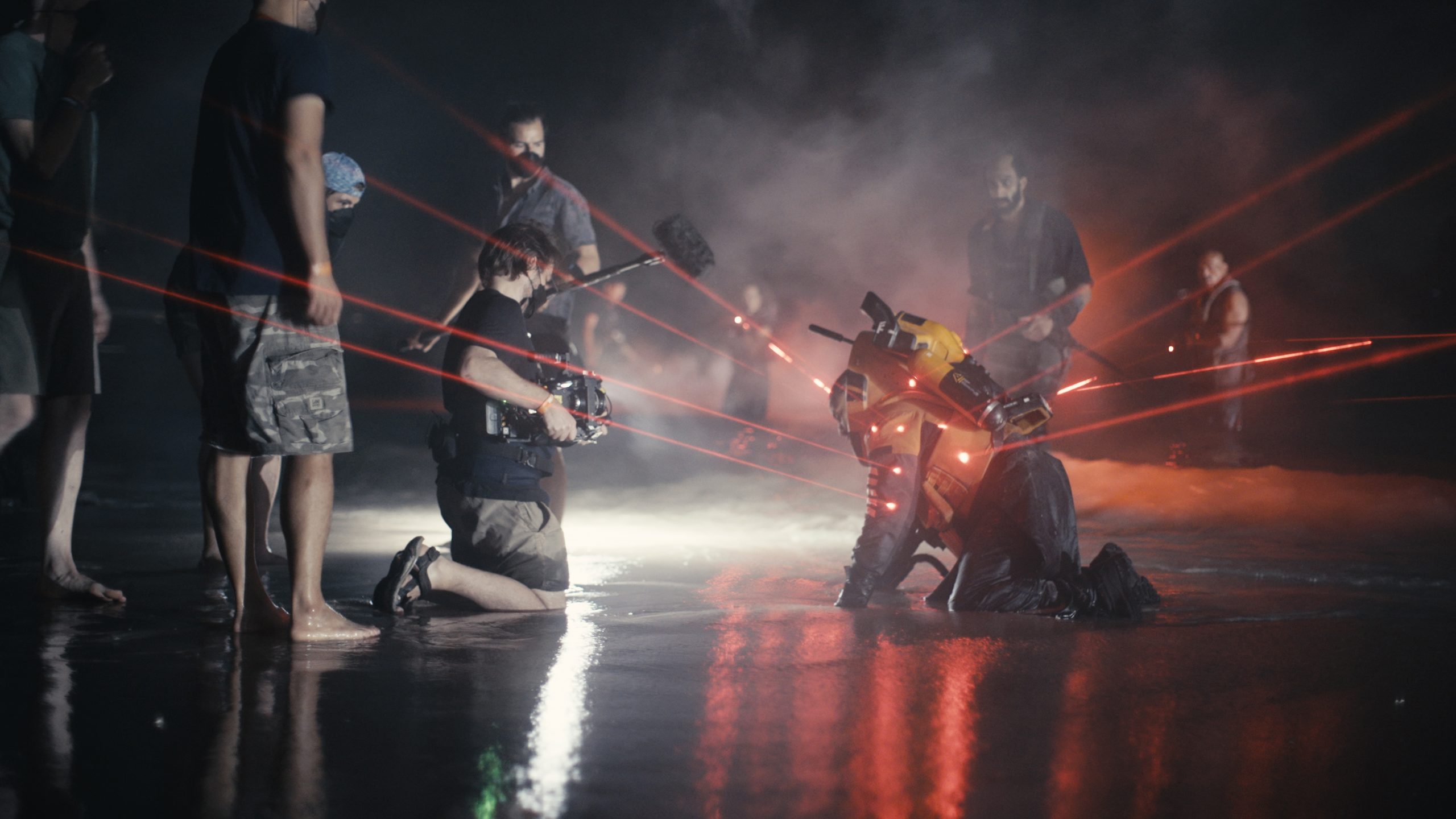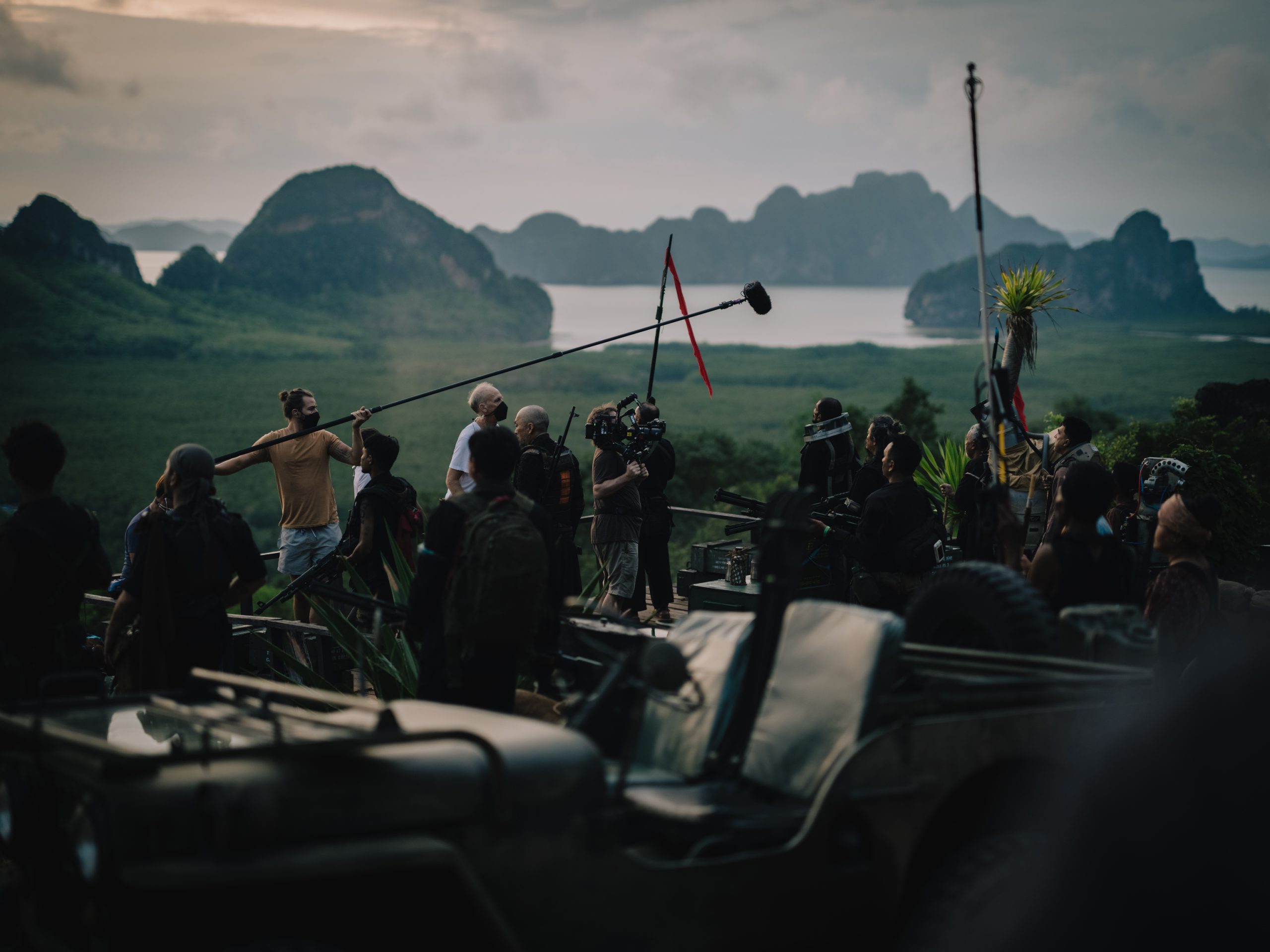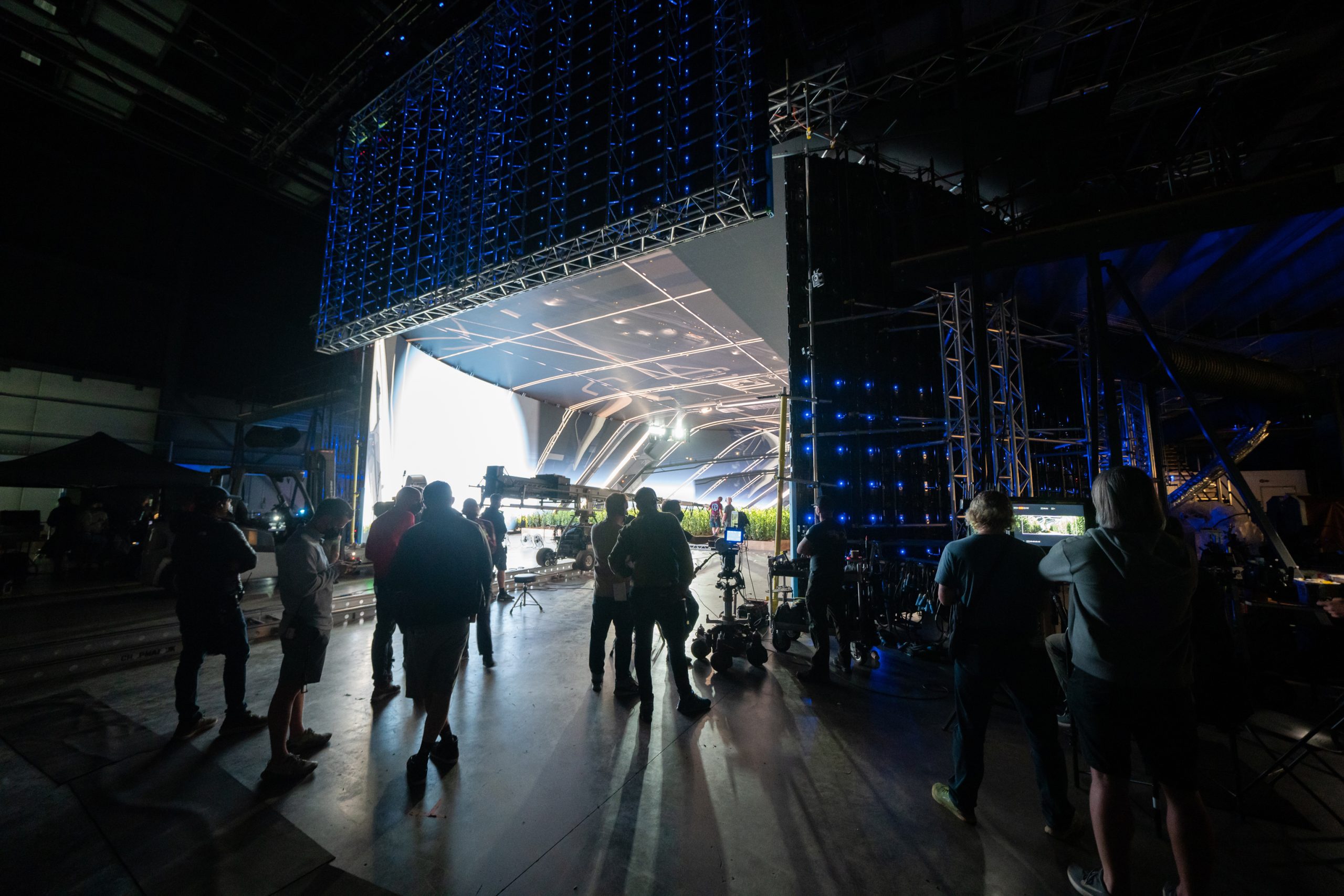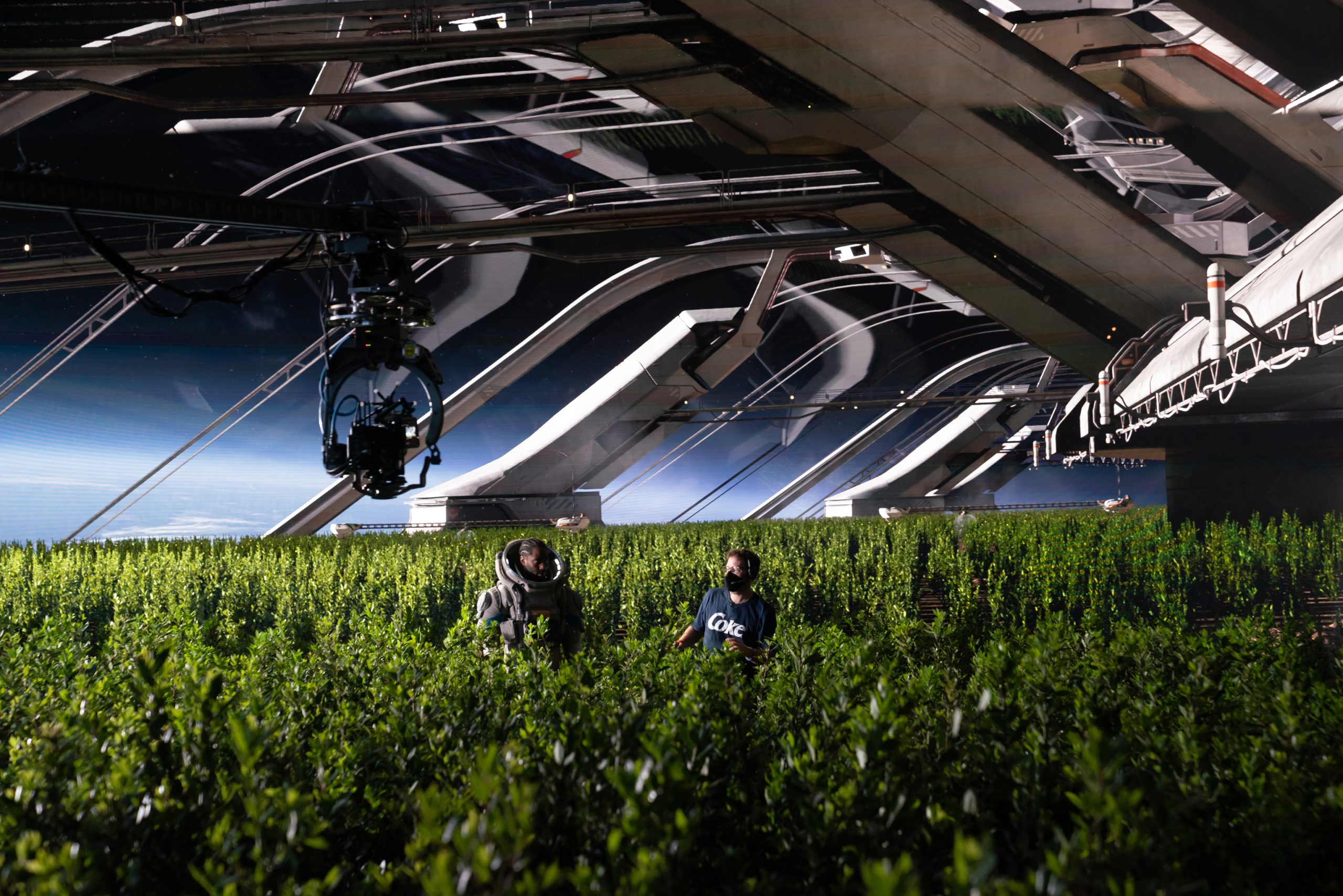After 25 years at ILM, Cooper has earned a reputation for seeking out the most efficient solutions to creative problems.
By Lucas O. Seastrom
Back in 2002, Industrial Light & Magic’s Jay Cooper was a compositing sequence supervisor on Master and Commander: The Far Side of the World (2003). For a time, director Peter Weir joined the ILM crew at their offices on Kerner Boulevard in San Rafael, California. “We had a shot when the mast of one of the ships falls over,” Cooper tells ILM.com. “There’s all this gunfire. It’s completely enshrouded in smoke. As I’m working on it, Weir comes to my desk and he says, ‘I want it to look like a beautiful nightmare.’ I was like, ‘Wow, that’s cool. Now what does that look like?’ [laughs]”
Over the past two decades, Cooper has moved into the visual effects supervisor role, working on projects as varied as Eternals (2021) and Babylon (2022). Most recently, he partnered with writer/director Gareth Edwards on The Creator (2023), a science-fiction tale with an unconventional visual effects methodology. As he and the ILM crew navigated the challenges of integrating effects into location photography with minimal reference data, Cooper managed to connect with Edwards in a way that reminded him of his experience with Peter Weir.

“Normally, as a visual effects supervisor, you’re being much more granular in your notes, lots of technical conversations,” Cooper says. “You don’t usually engage with artists in an emotional way. That’s what is really wonderful when you’re exposed to working with directors. That’s my favorite part of being a supervisor: you’re not always in the weeds talking about those details, you’re trying to engage with it at a story level. That’s the part that artists love. Gareth partnered with us in that way, and people got really excited about the project. Fun things happen when people get excited. They sneak in extra takes. They devote themselves in a huge way. We asked people to do really hard stuff without all of the support materials. If they know what we’re trying to achieve and we’re all pulling together, it can help make up for those shortcomings.”
At the beginning of the project, ILM’s chief creative officer Rob Bredow asked Cooper to meet with Edwards and producer Kiri Hart. “Gareth said, ‘Hey, I’ve got this movie and I hear you’re the guy who likes to cheat,’” Cooper says with a laugh. “He said that probably in the most affectionate way. I’m not really a devotee of any sort of process. I worship at the altar of whatever we can do as quickly and as simply as we can do it. As an artist, that was my forte. I did lighting and compositing, and I would try to navigate as many shortcuts as I could. I guess my reputation as a visual effects supervisor was that I’d work on shows with really small budgets and we’d try to wring out whatever production value we could. I think that’s why Rob put us together.”

Edwards’ vision and Cooper’s style were in tandem. In terms of workload, The Creator would be Cooper’s biggest project to date as a visual effects supervisor. “One of the best pieces of advice that [ILM executive creative director] John Knoll ever gave me,” Cooper notes, “was that you take big problems, break them into smaller problems, and smaller and smaller. So we created teams to hit different problems. We knew that we were going to be behind the 8-ball. We knew that Gareth had a smaller-than-desired budget, and he came to us wanting to partner in a different way.”
Edwards had been a visual effects artist himself before taking the director’s chair full-time. In his 2010 feature directorial debut, Monsters, he famously created many of the visual effects on his own. For Cooper, this practical experience helped define ILM’s approach to crafting visual effects with a “scrappy” sensibility. Shooting primarily on location in Thailand, Edwards focused on capturing his actors and the dramatic landscapes where they played out their scenes. Traditional effects tools like bluescreens and tracking markers would be almost completely avoided, and ILM would need to integrate their CG elements without the normal reference tools.

“Most of the time doing visual effects work, it’s very much a spreadsheet problem. You have seven robots at this amount of money, or fifteen environments at this scale at this amount of money. Even at the bidding stage for The Creator, we were instead asking what we could do for a certain amount of money. Just as a scrappy filmmaker, Gareth wanted to know what was possible in visual effects if we used different techniques and structured the show differently.
“If we take a whole sequence,” Cooper continues, “Gareth would explain how there’s only so much information you can take in during one shot, so let’s put everything together, bring it all up, and water the one element that’s dying. If you didn’t feel like there were enough robots here, how much do you need to add? Where’s your eye going to go? If a frame feels empty, what can we add? Is there a way to add something that avoids a roto-nightmare? Can we structure it so we don’t see the element in one shot but we do see it in the next two shots so that you sort of complete what the image is? Loosely, that’s how we went off and did the work.”
Much of that questioning and analysis was open to the larger visual effects crew. Initially, Edwards had planned to embed himself within ILM’s studio to personally oversee the work. Although pandemic concerns ultimately scratched that idea, he still welcomed artists from deeper in the ranks to present their work directly and share ideas.

“It takes a rare person to be comfortable enough to share your feedback openly with artists on the production,” Cooper notes. “It’s really wonderful. You get a level of engagement that you may not always find. Sometimes working on blockbusters, you can feel like you’re just punching numbers. But if you expose the artists to the reasoning behind something, the filmmaking intent, you get a huge level of engagement.”
As visual effects supervisor for the entire production, Cooper was busy overseeing work not only at ILM’s studios in San Francisco, London, Sydney, and Vancouver but also the assortment of smaller vendor studios enlisted to assist on the project. The initial shot count estimate had more than doubled by the time Edwards shared his initial cut. As he points out, ILM contributed “about 95% of the asset work and the lion’s share of the shot work” with the support of the vendors.
“As a supervisor, I’m sort of tapping the boat,” Cooper says. “You can’t be in every single file to model the rivets. You can’t go into every composite to add the elements. You’re asking for degrees of one thing or another, and there are a lot of places where people are volunteering an idea. They’re doing it in a way that they understand what the stylistic or aesthetic goal is.”
Overall, Cooper’s experience on The Creator felt like a return to an earlier era in visual effects, one that speaks directly to ILM’s can-do spirit. “ILM tries to find projects that are outside of the comfort zone of what has happened previously. It must have been wonderful in the late ‘80s or early ‘90s when the question wasn’t ‘can you do this?’ It was, ‘is this even possible?’ Those times have ended in many different ways. You do it enough times, and there’s a cost structure around it. So it’s interesting to be on a project where you chuck a lot of that away and get back to the basest level. We have a pot of money and a director with some big ideas. That’s the launching point. It’s cool and exciting to be in that world again.”
Read more about ILM’s work on The Creator with more from Cooper and his team.
—
Lucas O. Seastrom is a writer and historian at Lucasfilm.